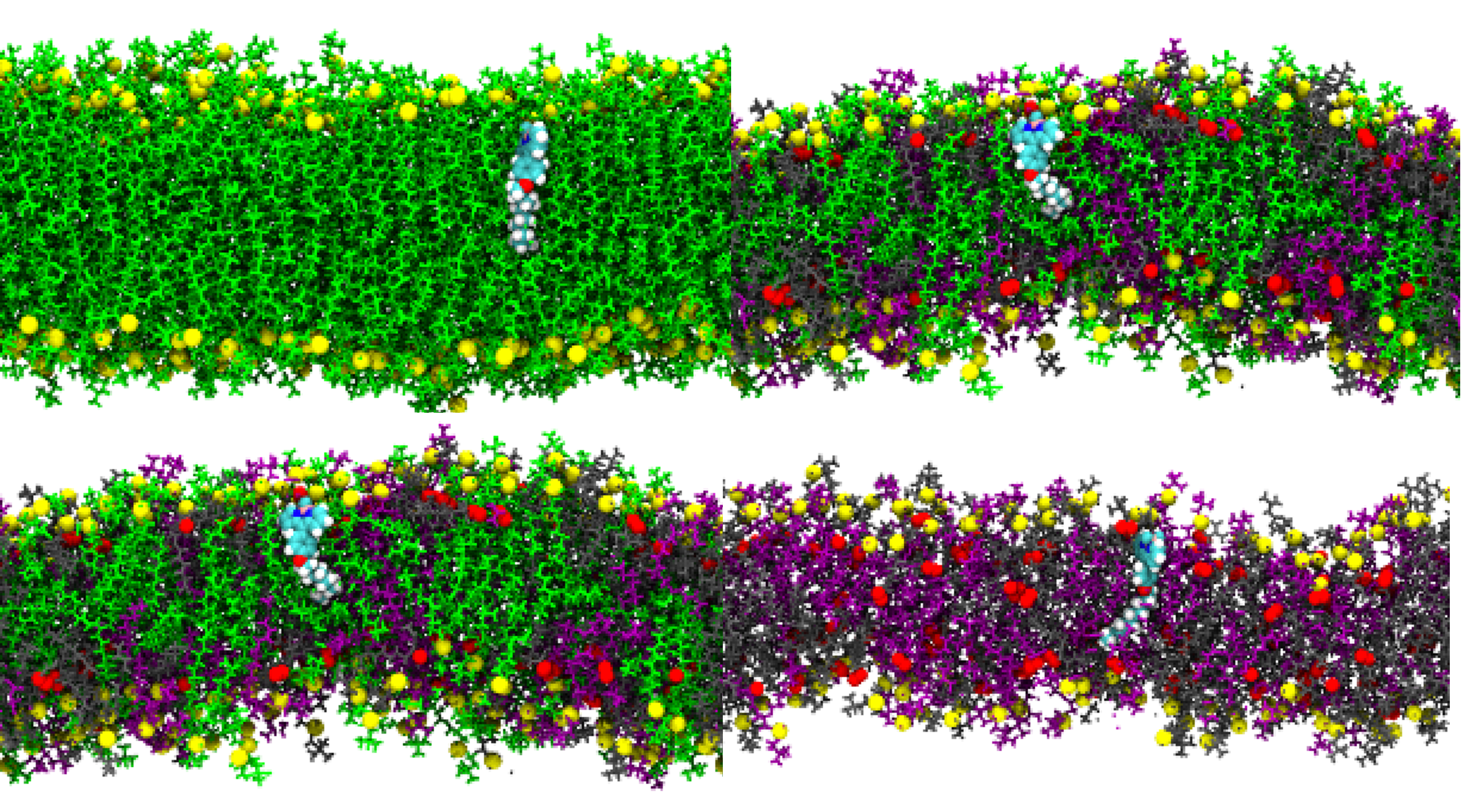Lipid peroxidation is a critical process in cell signaling and disease, and has been exploited in cancer therapy through photodynamic therapy. The presence of hydrophilic moieties in the bilayer’s hydrocarbon core can dramatically alter the structure and mechanical behavior of membranes. In collaboration with Marina Kuimova’s group at Imperial College London and others, we have combined viscosity-sensitive fluorophores, advanced microscopy, X-ray diffraction, and molecular simulations to directly and quantitatively measure the bilayer’s structural and viscoelastic properties. The results showed an increase in microviscosity and a decrease in bending rigidity upon peroxidation of the membranes, which was in contrast to the trend observed with non-oxidized lipids.
Fluorescence lifetime imaging microscopy and molecular dynamics simulations provided evidence for the presence of membrane regions of different local order in oxidized membranes. The researchers hypothesized that oxidation promotes stronger lipid-lipid interactions, which lead to an increase in lateral heterogeneity within the bilayer and the creation of lipid clusters of higher order.
In conclusion, this study sheds light on the impact of lipid peroxidation on membrane structure and mechanical behavior and provides a better understanding of the implications of this process for cell signaling and disease. Further research is needed to fully understand the impact of lipid peroxidation on cellular behavior and disease.
Full reference: Directly imaging emergence of phase separation in peroxidized lipid membraes, Miguel Paez-Perez, Aurimas Vyšniauskas, Ismael López-Duarte, Eulalie J. Lafarge, Raquel López-Ríos De Castro, Carlos M. Marques, André P. Schroder, Pierre Muller, Christian D. Lorenz, Nicolas J. Brooks & Marina K. Kuimova. Communications Chemistry (2023) 6, 15.

